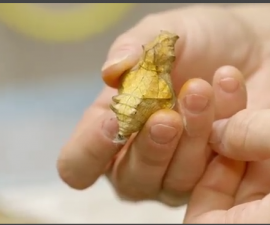With their incredible migrations of up to 3,000 miles and annual overwintering aggregations in the trees of Central Mexico and California, monarch butterflies Danaus plexippus are celebrities among insects and true butterfly royalty. They range from Mexico northward to Canada in two populations: one on the eastern side of the Rocky Mountains and a significantly smaller group on the western side. Sadly, the future of these glorious creatures is in doubt—and the western monarch population is in an especially precarious state.
Western monarch populations have been in a steady decline since the 1980s, with an abrupt drop of 86 percent between 2018 and 2019. Today’s population is less than 1 percent of historical levels—dangerously near the estimated quasi-extinction level of around 30,000 butterflies. Since numbers fluctuate naturally from year to year, one more severe loss in any year could render the population unrecoverable.
The Association of Zoos and Aquariums’ SAFE (Saving Animals from Extinction) North American Monarchs group is harnessing the collective power of zoos and aquariums to meet this conservation crisis. The goal of the program is to help boost the actions of monarch conservation partners like Xerces Society for Invertebrate Conservation, Monarch Watch, Monarch Joint Venture, and the National Wildlife Federation. We need all hands on deck, and that is why we created Play it Safe for Monarchs.
Individuals, families, and communities can help minimize known risks to monarchs through simple, enjoyable actions. To Play it SAFE for Monarchs, you take part in community science projects and create monarch habitat while avoiding activities that can put monarchs in harm’s way. We will be making and sharing plans all calendar year so you can help prepare for the fall migration and the spring migration/breeding season that follows.
Here are some ways you can help Play it SAFE for Monarchs:
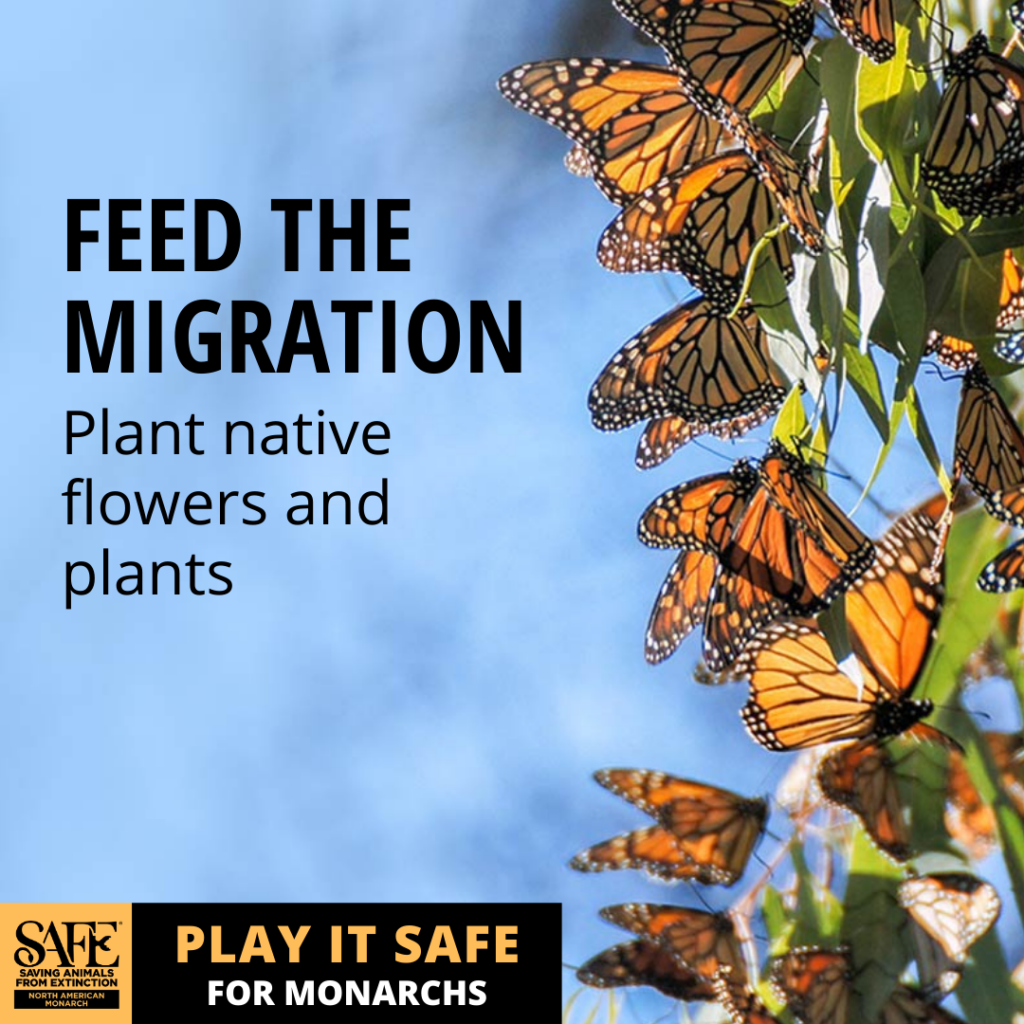
Challenge: Adult butterflies lack nectar sources on their long migratory journeys.
Monarchs need more than just milkweed to survive. Check in with your local native plant nurseries to find and plant the favorite nectar resources of monarchs in your area. Encourage your local parks, community centers, schools and neighbors alike to join in, speak up in city council meetings, and ask your mayor to sign the National Wildlife Federation’s Mayor’s Monarch Pledge! Any urban planning for monarchs will benefit the migration and all local pollinators.
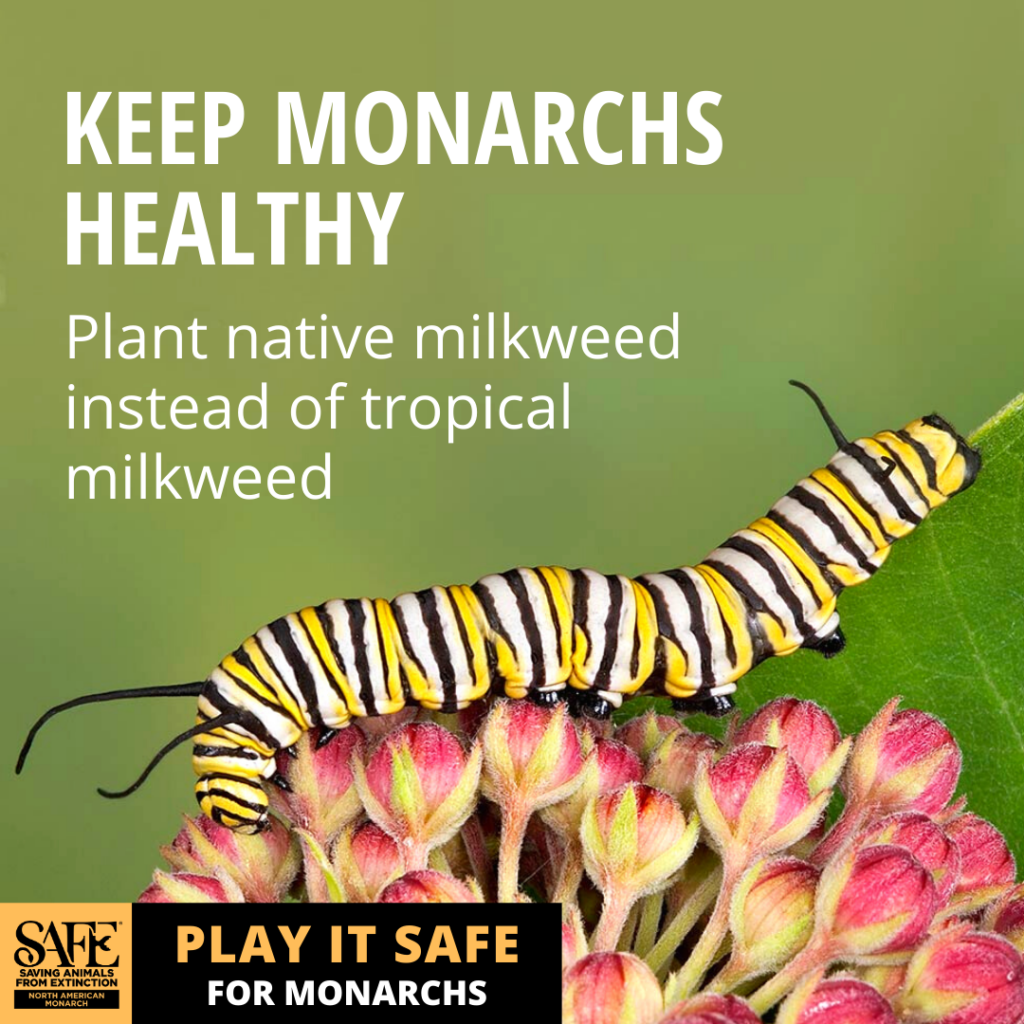
Challenge: Nonnative milkweed perpetuates disease in monarchs.
Along with climate change, disease has emerged as a serious threat to migratory monarchs. Monarchs suffer from a devastating protozoan parasite (Ophryocystis elektroscirrha, or OE) that is deposited on milkweed plants when infected adults land on them to lay eggs. Caterpillars become infected by eating the spores. Drastic outcomes can include deformity or even death of the adult animal, but many infected adults will survive and continue to spread the parasite.
Migration breaks this host-parasite cycle, as does the annual dormancy in native milkweeds. Native milkweeds in California typically die back in the fall and early winter, effectively eliminating the parasite’s connection to the butterfly host. The same is true for milkweeds found in the range of the eastern population, but some of the southern states have warmer temperatures that lead to extended availability of a nonnative tropical milkweed and increased infection. In general, native plants are always the best choice for local wildlife; for monarchs, native milkweed is critical.
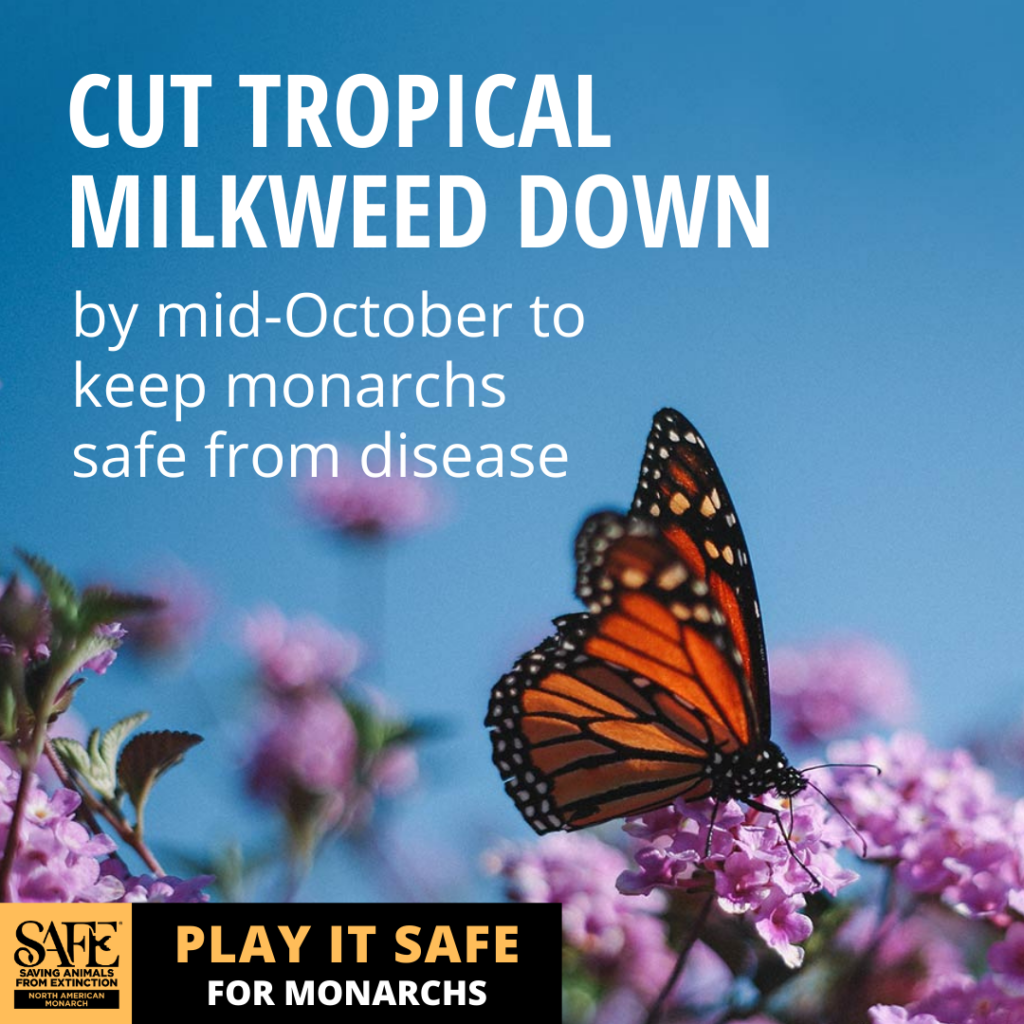
Challenge: Winter breeding increases disease and can disrupt migration.
The prevalence of nonnative, tropical milkweed (Asclepias curassavica) complicates the issue of disease from OE since unlike native milkweed species, this popularly planted exotic plant does not go dormant in the fall in warm areas such as Southern California. The year-round presence of tropical milkweed encourages winter breeding in monarchs, which can lead to parasitic infections up to nine times higher than in migratory populations! It can also disrupt migratory behavior, resulting in a permanent non-migratory resident population of monarchs occurring within the migratory range. Both disease and lack of migration directly threaten the already struggling migratory populations.
Tropical milkweed is prevalent and highly utilized for gardening and landscaping, and it is often the dominant milkweed available at nurseries. But demand drives supply—you can help by asking local nurseries to carry native milkweed for your area. Find regional seed and plants on the Xerces Society for Invertebrate Conservation/ Monarch Joint Venture seed finder. Locally, the San Diego Pollinator Alliance also sources native milkweed seed for monarchs. If enough customers ask for change, it will come!
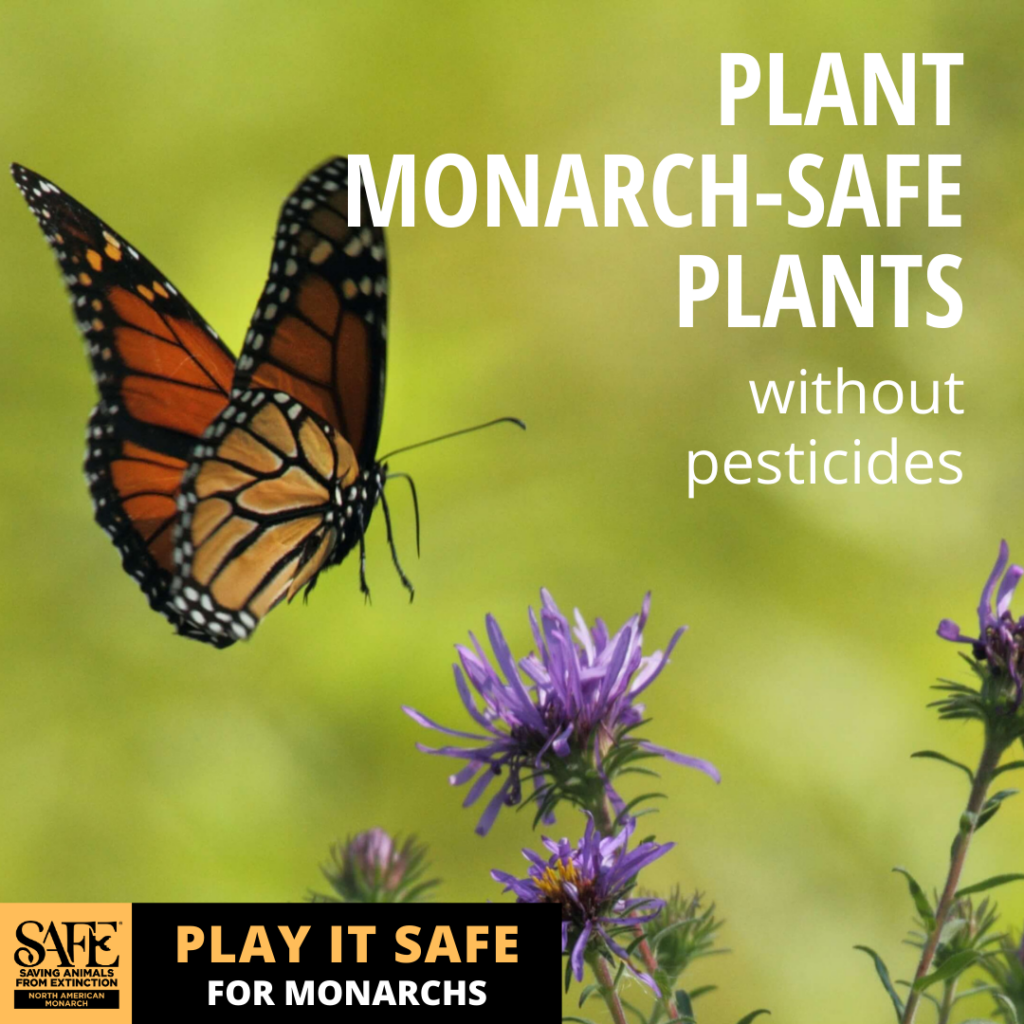
Challenge: Pesticide use in urban and rural settings contributes to the decline of monarchs.
Milkweed is the only host plant for monarch caterpillars, yet pesticides are present in both wild and cultivated plants. Long-lasting systemic neonicotinoid pesticides, the most widely used class of insecticide nationally, are strongly implicated in the western monarch’s decline. Many “butterfly-friendly” plants sold in commercial nurseries—including milkweed—are treated with these chemicals.
Systemic pesticides spread through all the tissues of the plants that are treated, contaminating nectar, pollen, and leaf alike. The result is that although the chemical may be marketed for a specific insect pest, it also has dire consequences for pollinators like bees and monarch butterflies.
Help feed the migration! Make your voice heard and ask your nursery for clean milkweed and nectar plants for pollinators that are not treated with pesticides! And just say “no” to systemic pesticides, at home and in your community.
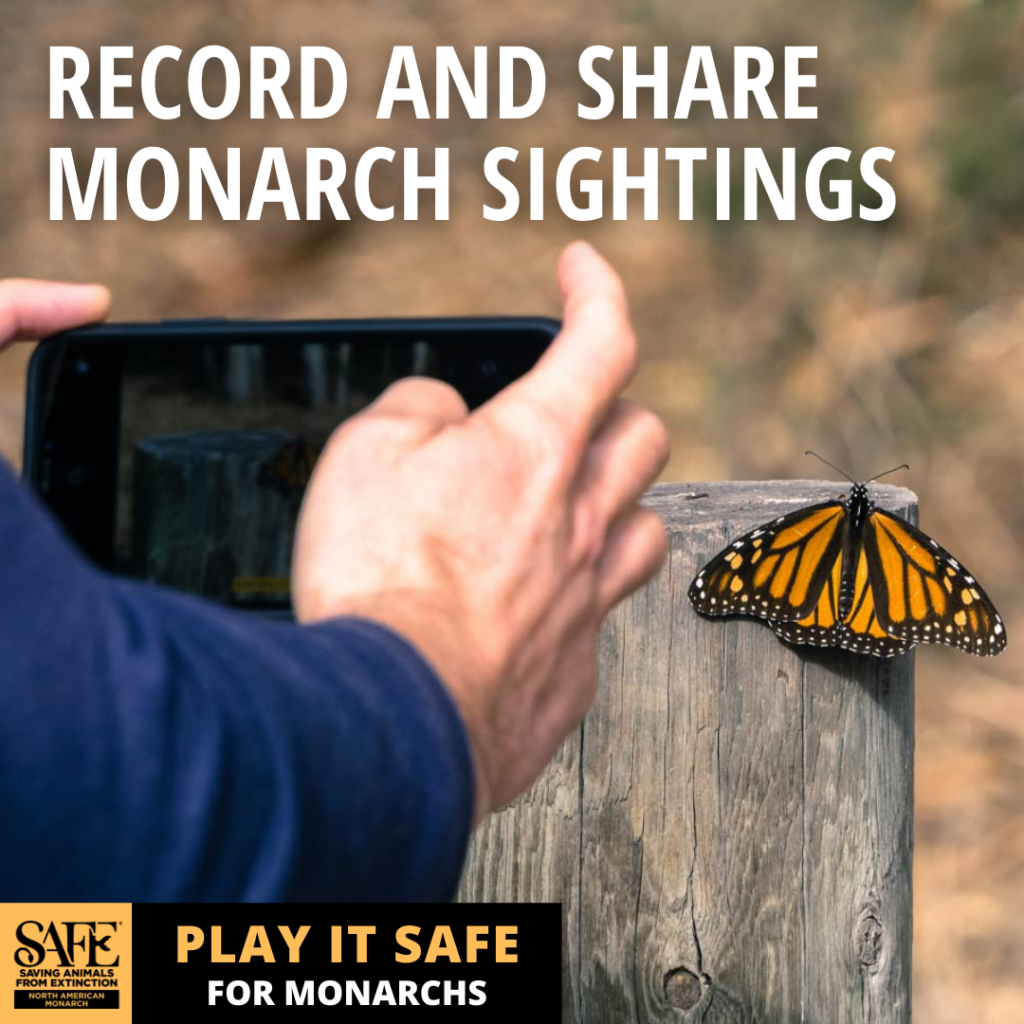
Challenge: Fewer monarchs are making it to the overwintering grounds; some of their movements are still a mystery to science.
You can help fill the many data gaps for western monarchs; knowing where their host plants grow and how they travel is very important in informing management decisions that affect their future. Join any or all of these efforts—it’s rewarding and fun!
Western Monarch Milkweed Mapper by the Xerces Society for Invertebrate Conservation lets you share observations of western monarchs and locations of milkweed plants.
Journey North tracks movements of monarchs in both populations, as well as milkweed, helping scientists understand the movements of migratory monarchs through their habitat in real time.
Monarch Joint Venture is an impressive monarch conservation collaborative with many relevant community science opportunities—something for everyone!
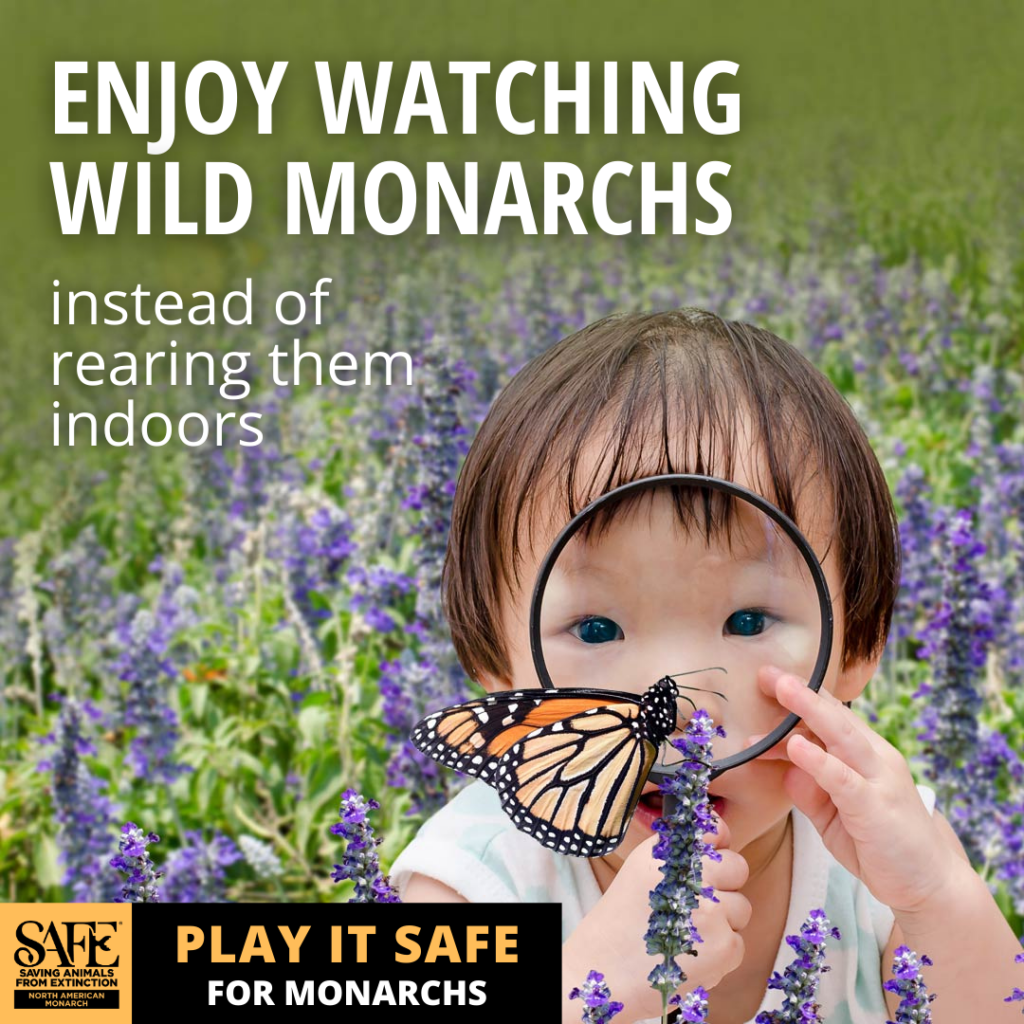
Challenge: Indoor, captive rearing introduces risk to monarchs, particularly in the west.
Many conservation actions for threatened insect species are centered on the captive propagation and subsequent release of offspring into wild habitat—this is true for many butterflies. In most cases, this approach is a last resort to restore a species, is undertaken in a very controlled environment, and accompanies other measures in a given recovery plan.
For western monarchs, however, captive breeding can lead to unintended consequences and even have the net result of harming the migratory population. Migratory behavior in monarchs is extremely flexible and a delicate balance of inputs is required to support its proper development. Several monarch studies conducted over the past two years have revealed that indoor, captive rearing can produce smaller, weaker butterflies that fail to orient properly for migration as compared to their wild counterparts. In addition, commercial releases of monarchs for weddings and other special events can cause butterflies that may be bred in captivity for multiple generations to be released into the range of the migratory population, introducing undesirable traits and disease and complicating monitoring efforts. Both of these risks to monarchs are uniquely preventable and totally within our control, something that we cannot easily say about the other threats that monarchs face.
Besides, anyone who loves rearing monarchs in their home can love “ranching” them just as much outside! Creating breeding habitat outside with native plants gives monarchs the best chance for proper development of all their physical and behavioral traits and will result in a more robust population.
So join us, please, in playing it SAFE for monarchs! Your protective actions can have real, tangible effects on both populations and your observations are critically important to science. And it is no exaggeration to say that right now, every single choice and action matters, especially for western monarchs.
Paige Howorth is the McKinney Family Director of Invertebrate Care and Conservation for San Diego Zoo Global.




